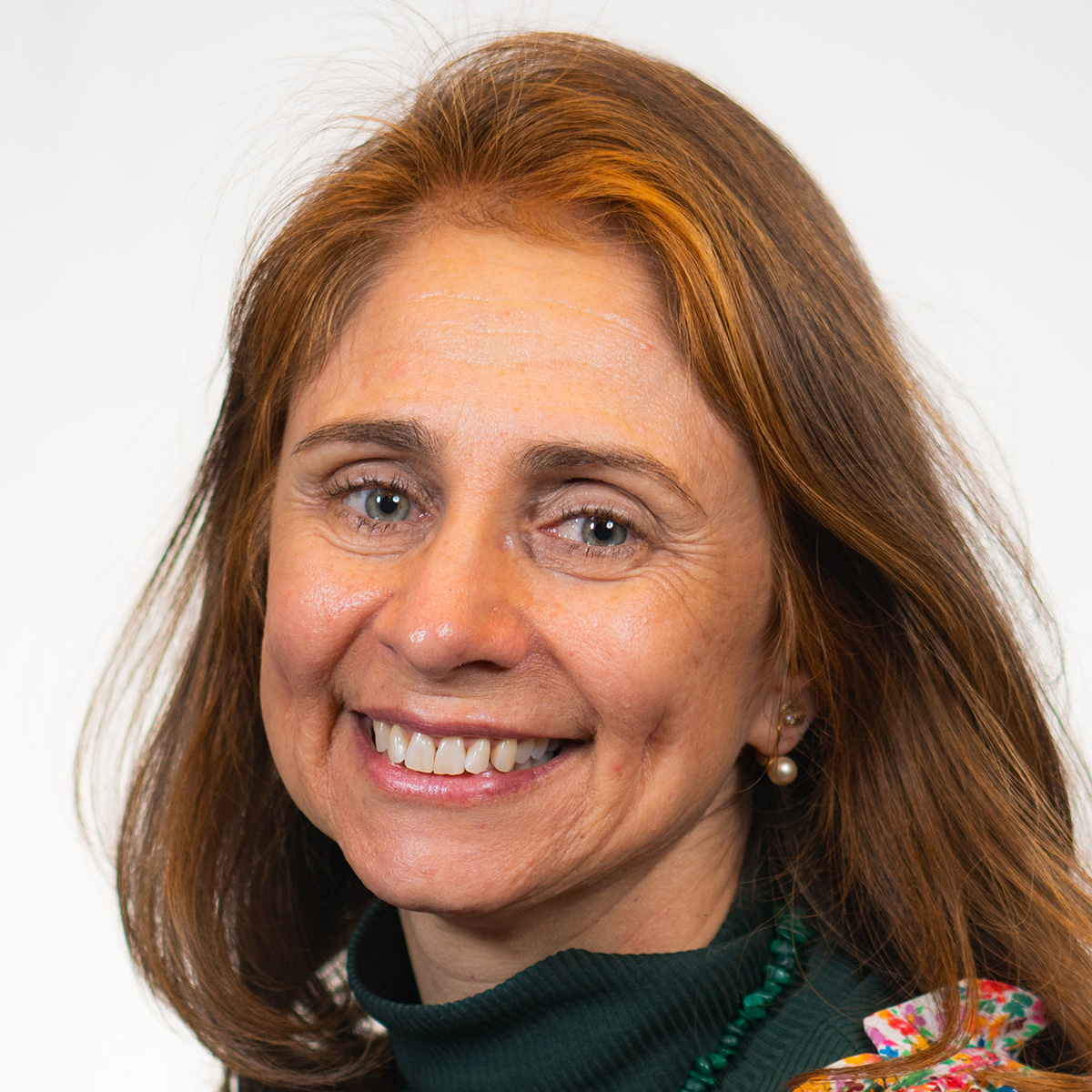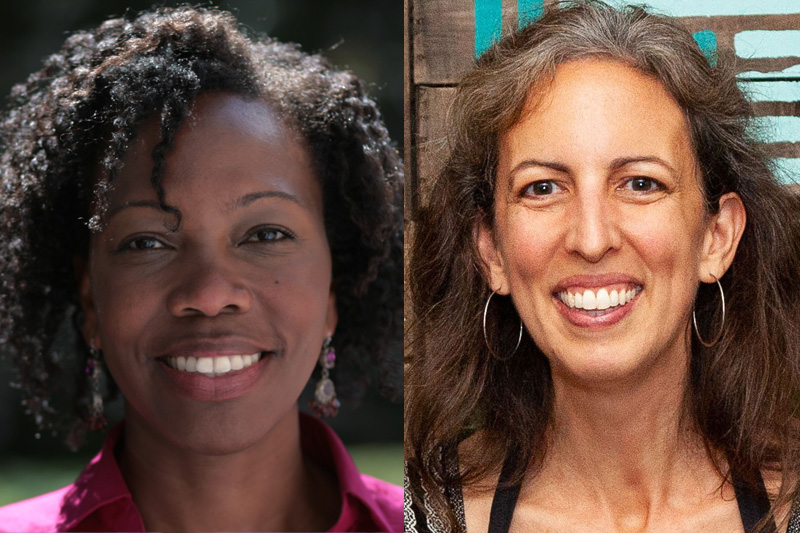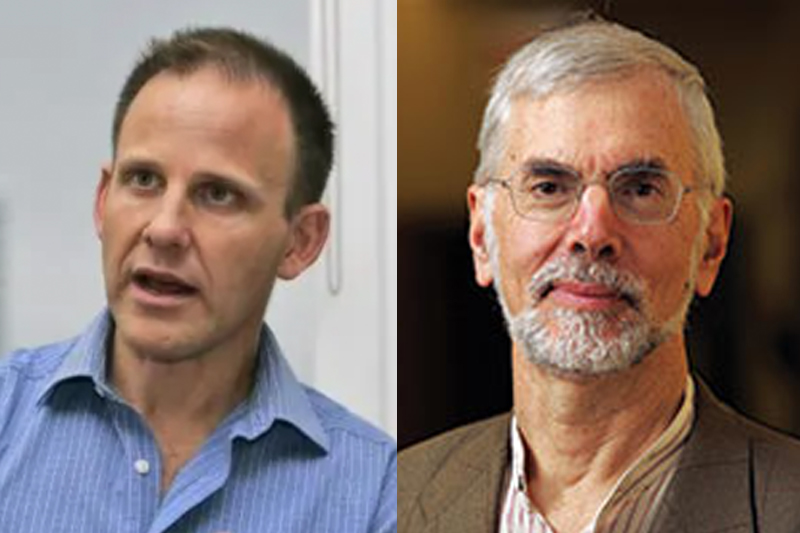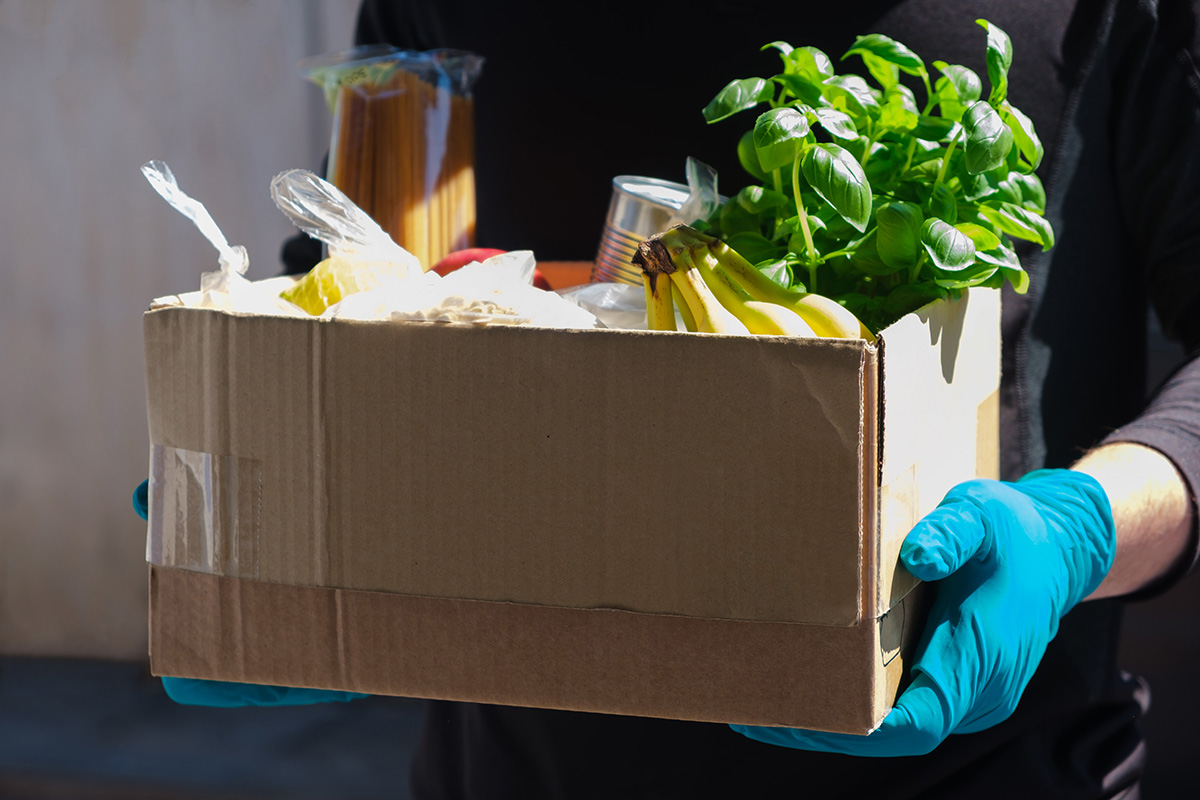When Pamela Koch was an undergraduate during the 1980s, she carried a 120-pound bag of sugar — the amount consumed annually by the average American — into her college’s dining hall and told anyone who would listen about the consequences of such a diet and how to change it.
It was an innovative approach, but looking back, “I am sure there were many food-insecure students who never saw my presentation because they didn’t have the swipes to eat in the dining hall,” said Koch, the incoming President of the Society of Nutrition Education and Behavior (SNEB), in her inaugural address at the organization’s 2020 meeting, held online in mid-July.

POWERFUL LESSONS As SNEB’s new president, Koch argues that “nutrition education gives people the power to demand healthy, just sustainable food by disrupting the status quo.” (Photo: TC Archives)
For Koch, Executive Director of Teachers College’s Laurie M. Tisch Center for Food, Education & Policy, and Associate Research Professor in the College’s Program in Nutrition, that experience has come to stand as a lesson that “my whiteness and my white framing of the world have influenced everything I do in many more ways that I could ever be aware of.” That she could not see that fact at the time, Koch suggested to her listeners at the SNEB meeting, reflected another lesson she also began learning in college.
“I was also working alongside a sex educator that year who was contending with the abstinence movement,” she recalled. “At one point, I said how glad I was that nutrition education was free of all that controversy. She looked at me, and she said, ‘Pam, you’re young. There’s plenty of controversy — you just haven’t taken the time to notice it yet.”
Today, Koch says, she wants to “forge a future for our field that takes on controversies and faces them head on, even in the upheaval we’re currently experiencing.” The COVID pandemic and police violence against people of color are exacerbating nutritional challenges such as racial inequities in food access and health; the fragility of centralized and concentrated food systems; and a food supply dominated by ultra-processed foods. “But times of disruption are moments to reflect, reconnect and rebuild,” Koch said. “Nutrition education gives people the power to demand healthy, just sustainable food by disrupting the status quo.”
Koch wants to “forge a future for our field that takes on controversies and faces them head on, even in the upheaval we’re currently experiencing.”
—Pamela Koch
Teachers College has a longstanding connection with SNEB, which was founded in the late 1960s. Joan Gussow, now the College’s Mary Swartz Rose Professor Emerita of Nutrition Education, was one of the organization’s early presidents, and Isobel Contento, current Mary Swartz Rose Professor of Nutrition Education, is a past president of the SNEB Foundation. The outgoing SNEB president, Jennifer Wilkins, is also a TC alumna. Both Gussow and Contento have also received SNEB’s most prestigious honor, the Helen Denning Ullrich Award of Excellence in Nutrition Education.
For her part, Koch charged her listeners with elevating what she called the 5 “Rs” of nutrition education: “richness,” or a focus on food systems; “resolve,” or the need to bring more diversity into “our mostly white profession”; “recognition”, or an understanding that disparities in health and wealth create inequities; “relevance,” or the importance of a healthy diet and of nutrition education itself; and “resilience,” or, as she put it, “using our grit” to persist in the effort to achieve all of these aims.

REPORTING FROM THE FIELD Raynika Trent (left), Project Director at TC's Tisch Food Center, and alumna Jennifer Mampara reported on scratch cooking efforts in public school cafeterias. (Photo: TC Archives)
To illustrate what a focus on “richness” looks like, Koch cited the nutrition program at TC, “where we think about the food system from the farm to the fat cell,” and all the consequences in between — for example the stench of animals raised in confined feeding operations in the American South and Midwest, which affects mainly non-white communities, and antibiotic resistant "superbugs" these overcrowded conditions for animals are creating. The food system is also contributing to nitrogen and phosphorous pollution that has given rise to the Gulf of Mexico "dead zone" and colony collapses in bees. Furthermore, Koch said, “we have to recognize that the soil is living” and that the concentrated systems of crop rotation instituted and maintained by white people harm important microbes in the soil. “White dominance” and a profit motive in agriculture and large food companies has also resulted in a focus on ultra-processed foods, she said, filled with additives to make them “hyper-palatable,” that causes weight gain and other negative health impacts.
Times of disruption are moments to reflect, reconnect and rebuild. Nutrition education gives people the power to demand healthy, just sustainable food by disrupting the status quo.
—Pamela Koch
“Our real power as food and nutrition educators is to work alongside people in communities for meaningful and lasting change to their food environments and for better food policies at the federal, state and local level,” she said.
But that work requires a concomitant focus on relevance. Koch pointed out that the National Institutes’ of Health’s 2020-2030 Strategic Plan for Nutrition Research is “silent on funding for the effectiveness of nutrition education.
Our real power as food and nutrition educators is to work alongside people in communities for meaningful and lasting change to their food environments and for better food policies at the federal, state and local level
—Pamela Koch
“We need louder and clearer voices to elevate the critical role of nutrition education research, policy and practice,” she said.
— Joe Levine
Evaluating the Recent Past to Improve the Future: TC partners in two key nutrition research projects
The SNEB meeting also featured presentations on two research projects in which Teachers College faculty and alumni are key players.
In a session titled “The Future of Scratch-Cooked Meals,” a group of presenters that included Raynika Trent, Project Director for TC’s Tisch Food Center, and Jennifer Mampara, (M.S. ’97), Director of Education at FRESHFARM Markets, a nonprofit that promotes sustainable agriculture and improves food access and equity in the Mid-Atlantic region, discussed a growing movement nationwide to enable school cafeterias to prepare freshly cooked meals, often in concert with school nutrition programs that seek to give students hands-on experiences with gardening and food preparation. Trent summarized findings of “Cooking Outside the Box,” a TC-led report on a pilot project in New York City in which Daniel Giusti, former chef at Copenhagen’s two-Michelin star restaurant Noma, led conversion of two school cafeterias in the Bronx.
[Read a New York Times story on Giusti and the school cafeteria project.]
The researchers documented the systems changes in the two kitchens, such as new plumbing and electrical wiring, special equipment and culinary training; interviewed staff, students and students’ families to understand the impact of the changes, and distilled best practices for guiding a citywide shift to scratch-cooked food service.

SYSTEMIC THINKERS Charles Platkin (left) of Hunter College and Nick Freudenberg of CUNY joined Koch in reporting on COVID’s impact on New York City food systems. (Photo: TC Arhicves)
Overall, the study declared the project a success. While food and labor costs increased at the beginning, they eventually leveled off — and would decrease further if food ingredients were purchased across the entire New York City school system. During the first three months of the pilot, labor costs averaged 176 percent higher than during the prior year, but by the final month were only 28 percent higher as staff became more proficient at scratch cooking.
The biggest negative finding was that participation by students in school meals actually declined at the two sites. But the researchers believe that with increased nutrition education, promotion to the community, and efforts to provide more “culturally relevant” meals, that trend could be reversed.
The other major presentation featuring work by TC researchers was titled “New York COVID-19 Impact on Food System (COIFS): Evaluation Rationale and Framework.”
In this project, three major New York City food policy centers — The Tisch Food Center at TC, the CUNY Urban Food Policy Institute, and the Hunter College New York City Food Policy Center — are teaming up to learn how the pandemic has changed food systems in the city, with the goals of extracting lessons for dealing with ongoing fallout from the crisis (food insecurity levels doubled and even tripled in some parts of the city, and may still be increasing), for facing future disasters (including a second wave of COVID, if that should occur here) and for ensuring that positive changes made during the crisis are extended to so-called normal times — for example, the use of the school food system to provide meals to adults as well as children.
One key starting point for the effort, said Koch, is the finding that many patients hospitalized for COVID had other chronic diseases. The death toll in the city reflected “a previous failure of public health efforts to address diet-related chronic disease already at very high levels,” she said.
Charles Platkin, Executive Director at Hunter College NYC Food Policy Center and Distinguished Lecturer at Hunter College, said that his center wants to understand which food resources were available during the crisis. More than 30 to 40 percent of food pantries closed, for example — and while many were small, local centers, their closure was a big loss for people who knew and relied upon them. The Center hopes to learn whether there were more closures in underserved communities; whether more bodegas and supermarkets in these areas closed or experienced shortages of healthy food items; and whether barriers to accessing food included issues such as — for immigrants — fear of U.S. Immigration and Customs Enforcement (ICE). The Center also wants to know if and how retail food has changed — for example, whether there has been more reliance on fast food and takeout, and what the implications are for nutrition.
Building off its expertise in evaluating the school meals system, TC’s Tisch Center will look at how New York City agencies have provided meals during the pandemic — a complex process to understand, Koch said, because while local agencies provide food, the funding often comes from the federal government and is implemented by the state. The Tisch Food Center hopes to determine the best way to provide food to the most vulnerable New Yorkers; to determine the impact of the crisis on food workers (many of whom were also experiencing food insecurity) and, in a special case study, to understand precisely how the school meals program carried out the work of helping adults as well as children.
“What’s really interesting is that the Office of Food and Nutrition Services had worked across the entire school system before the pandemic,” Koch says. In contrast, during the crisis, meals for senior citizens have been provided by many different organizations, in far less structured and coordinated ways.
For its part the CUNY Urban Food Policy Institute is looking at the impact of the pandemic on New York City’s food system as a whole, said Nick Freudenberg, the Institute’s Director and Distinguished Professor of Public Health at the CUNY Graduate School of Public Health & Health Policy. A starting point for the Center was a report it compiled in 2018, which found that the city had made great progress during the previous decade in forming and implementing plans to address issues such food insecurity and access to healthy food — but that there were not a lot of changes in outcomes.
“Often there is a motivated, compassionate response” in a crisis, Freudenberg said, but then conditions return to normal.
“And in New York City we know that normal is 1.2 million people who are hungry, persistent high rates of diabetes and obesity, and stark racial and economic inequities. We wanted to make sure that in response to COVID, New York City would not be going back to an inequitable system, but instead would be going forward and using the crisis of CIOVID and the response it generated to address deep seated problems.”
